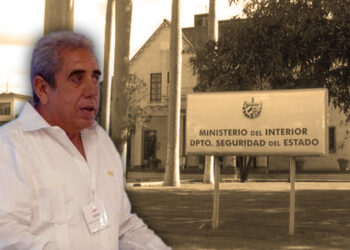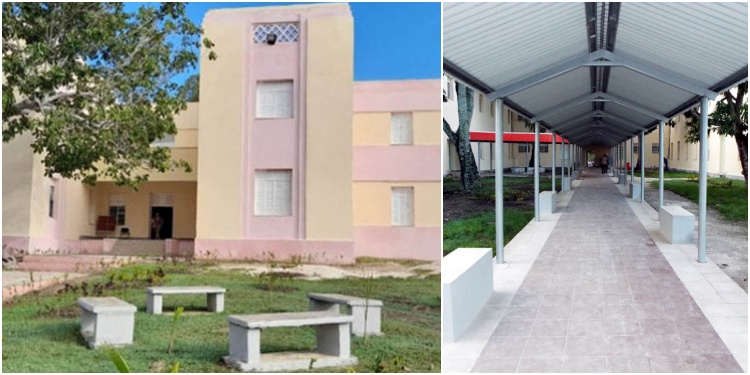MIAMI, United States. – More than a dozen elderly Cubans died last week in Holguín’s Psychiatric Hospital, the “ITH” as it is known, according to sources from the Public Health sector that spoke to CubaNet.
According to a health worker who spoke on condition of anonymity for fear of reprisals, it’s about 15 deaths due to bronchial pneumonia and aspiration pneumonia which have occurred.
Another health professional close to the case indicated that there were only 13 deaths due to those reasons, while another source stated that 16 patients had died of malnutrition, anemia, and bronchial pneumonia. “In other words, due to malpractice,” stated one of the physicians who also spoke of the cold temperatures and lack of supplies that the victims were enduring.
Add to that the fact that they all were senior citizens; there is no other information about the dead.
At this time, a high-ranking official commission from Havana is in Holguín because of these deaths, the health workers that we consulted stated. A publication on Facebook by the Holguín Province Public Health Department director, Julio Yamel Verdecia Reyes, confirms this statement, without giving the actual reasons for the meeting.
“Ministerial meeting in Holguín province has started; we met with the Provincial Management Councils of the municipality of Holguín and Provincial Hospitals,” states his Facebook profile. The publication includes the links #HolguínEsSalud and #CubaPorLaVida, but no mention is made of patients dying in the Provincial Psychiatric Hospital.
The news, which has not been confirmed as of yet by any institution or official news medium, has shocked the public health personnel in Holguín.
The sources that CubaNet consulted assured us that administrative measures had been taken already against physicians and nurses involved. According to them, following the tragedy a specialists’ team was created to check on all admitted patients at the psychiatric facility.
Sector authorities decided to transfer the patients that remained in the institution to the Geriatrics ward of Provincial Hospital “Vladimir Illich Lenin” and the “Lucía Íñiguez Landín” Clinical Surgical Hospital, added the sources we consulted.
The multidisciplinary team that evaluated the patients at the psychiatric institution is composed of specialists in Internal Medicine, Geriatrics, Cardiology, Nephrology, Endocrinology, Surgery, Oncology and Psychiatry, the sources also stated.
In a meeting with her colleagues, a high-ranking Public Health officer in Holguín criticized the poor attention and follow-up received by patients, referring specifically to the “poor clinical histories, misdiagnosis, and lack of specialists’ supervision,” which she considered a total lack of respect toward the patients.
“The conditions those patients were in were pitiful: their bodies were skin and bone, with scabies and lice all over,” confirmed to CubaNet a physician close to the case.
Following these events, the provincial director of Public Health, Dr. Julio Yamel Verdecia Reyes, issued a set of instructions that came out of “the investigation undertaken once the unexplained deaths at the Provincial Psychiatric Hospital occurred,” as stated in an official document distributed among health workers at the Vladimir Lenin and the Lucía Íñiguez hospitals, to which CubaNet had access.
Salient among them are the transfer of patients from the Psychiatric Hospital to provincial hospitals, as well as an analysis of these cases in the on-call assignments at the health centers in the province.
Patients whose transfers do not end up as admissions will be placed under observation and evaluated by the specialty chief of the On-Call Team at each institution, until the top authorities at the Vladimir Lenin and Lucía íñiguez hospitals decide either to admit them or release them. These top hospital authorities will be the only ones who will be allowed to discharge patients, and not the specialist on call.
“Transfers of this type of patients will be handled by the Integral Medical Emergency System (SIUM, by its Spanish acronym) as top priority,” states the text.
The causes of death will be discussed in a period not to exceed 72 hours following the death of the patient; these discussions will include the directors of the medical institutions, as well as the specialists in charge of medical attention and handling of the Hospital and Senior Citizen sections, states the document to which CubaNet had access.
The document explains the role of the administration in documenting and communicating about the patient’s condition; and the role of the financial department to guarantee “specific attention to everything related to the patients’ nutrition.”
The present tragedy is a reminder of the death due to hypothermia in 2010 of 26 patients at Havana’s Psychiatric Hospital, better known as Mazorra, that resulted from a cold front that affected the country. Official sources admitted responsibility back then for the tragedy after complaints were made by human rights activists.
According to information provided by Prime Minister Manuel Marrero Cruz last December during the tenth ordinary session of the People’s National Assembly, almost 2.4 million people in Cuba are 60 years or older. At the closing of 2022, they represented 21.6% of the Cuban population, according to information shared by official media.
In spite of being the only population group that keeps increasing, it also is the most vulnerable, lacking in effective social assistance and decent pensions.
Add to this the deterioration in medical and public services in general, where there are shortages of medication and essential supplies such as syringes, dextrose, antibiotics and analgesics, among others.
Data from Cuba’s National Office of Statistics and Information (ONEI, by its Spanish acronym) indicate a reduction of 148 million pesos in Public Health and Social Assistance investment between 2016 and 2020, even though income from this sector during the same period increased from 6,507.7 to more than 9 billion annually.
This means that in 2020, for instance, the Cuban government invested less than 1% in Public Health and Social Assistance. in 2021, in spite of the fact that investments exceeded 1 billion pesos –in the context of the COVID-19 pandemic- they barely represented 1.7% of income.
Recibe la información de CubaNet en tu celular a través de WhatsApp. Envíanos un mensaje con la palabra “CUBA” al teléfono +1 (786) 316-2072, también puedes suscribirte a nuestro boletín electrónico dando click aquí.

















